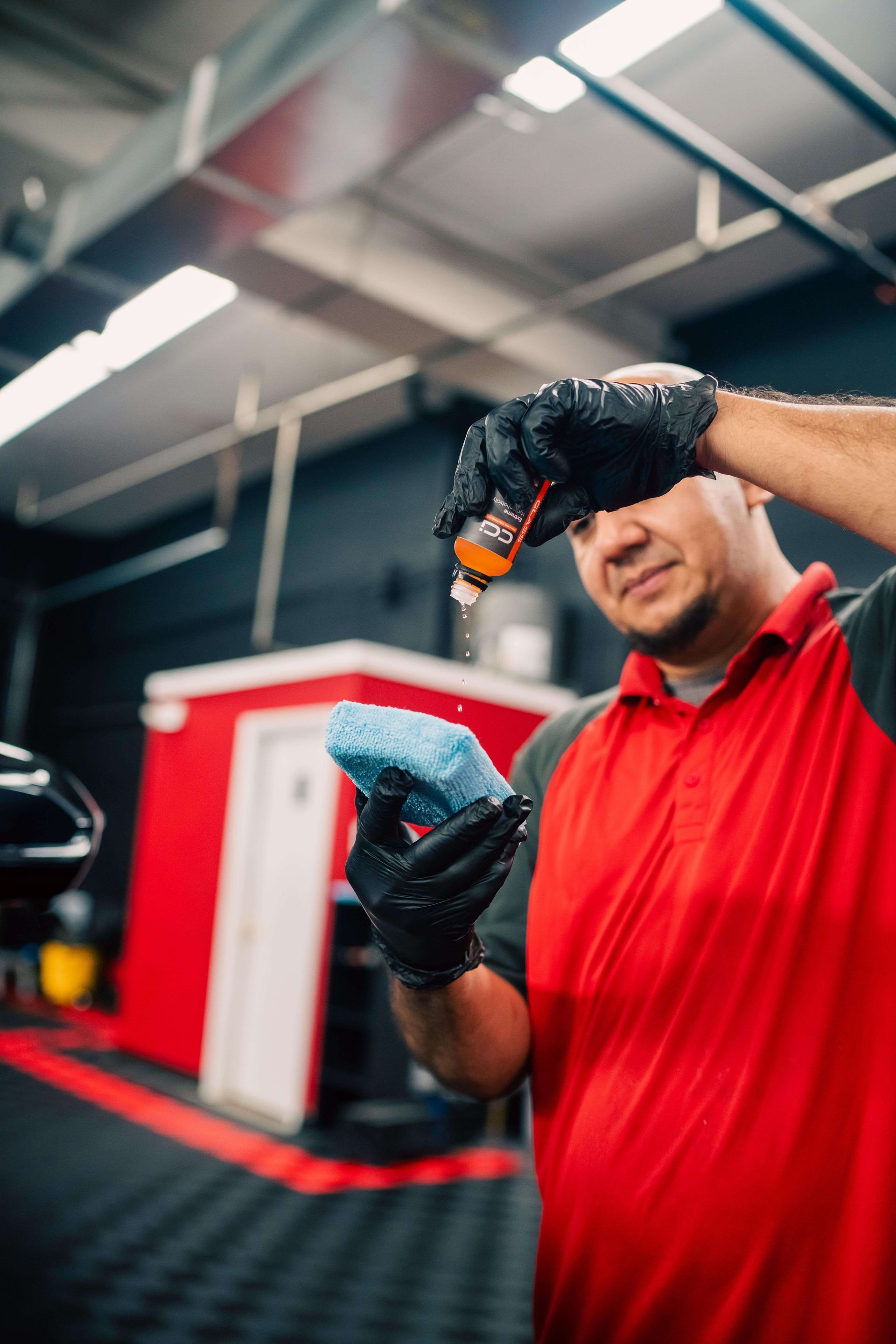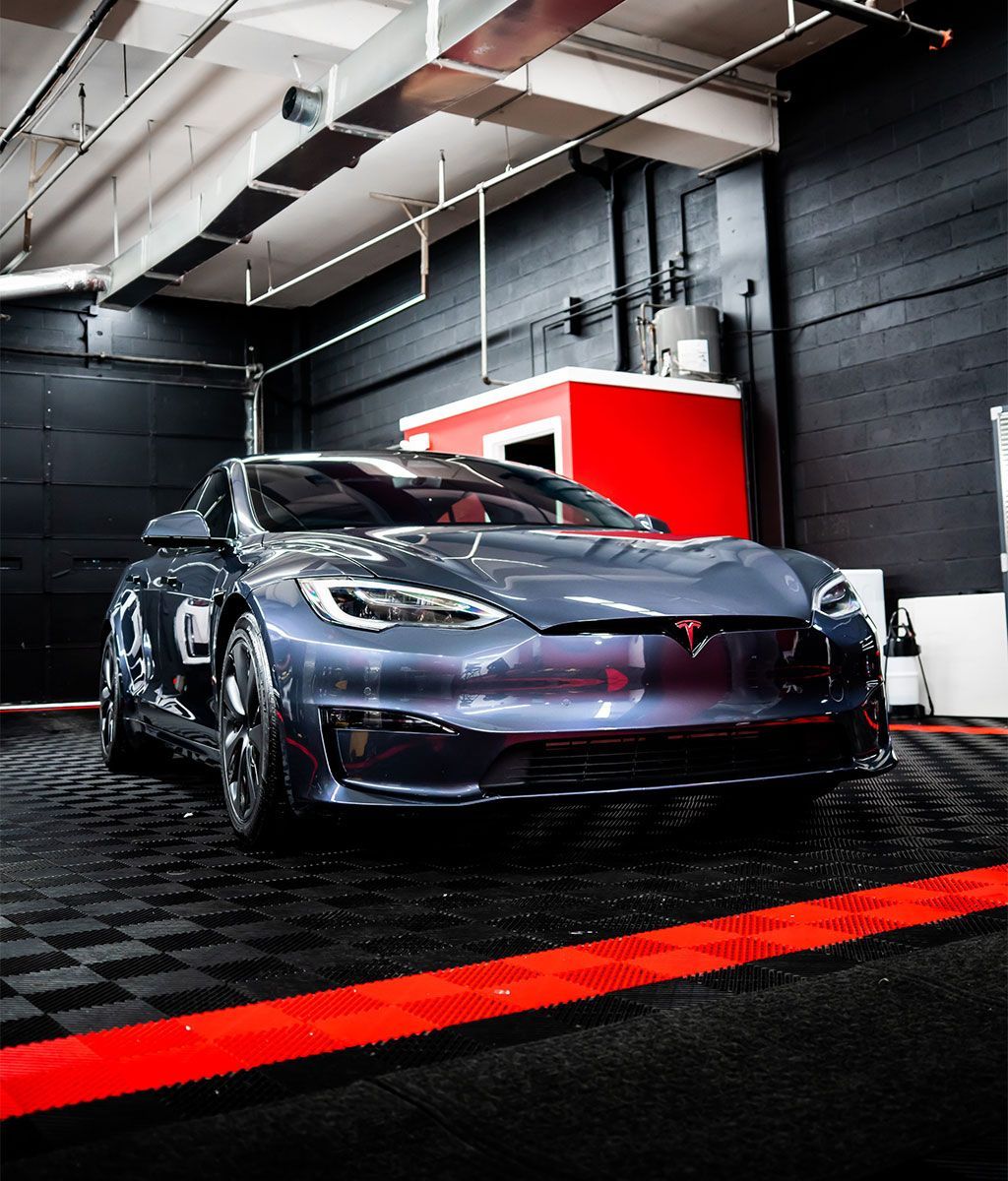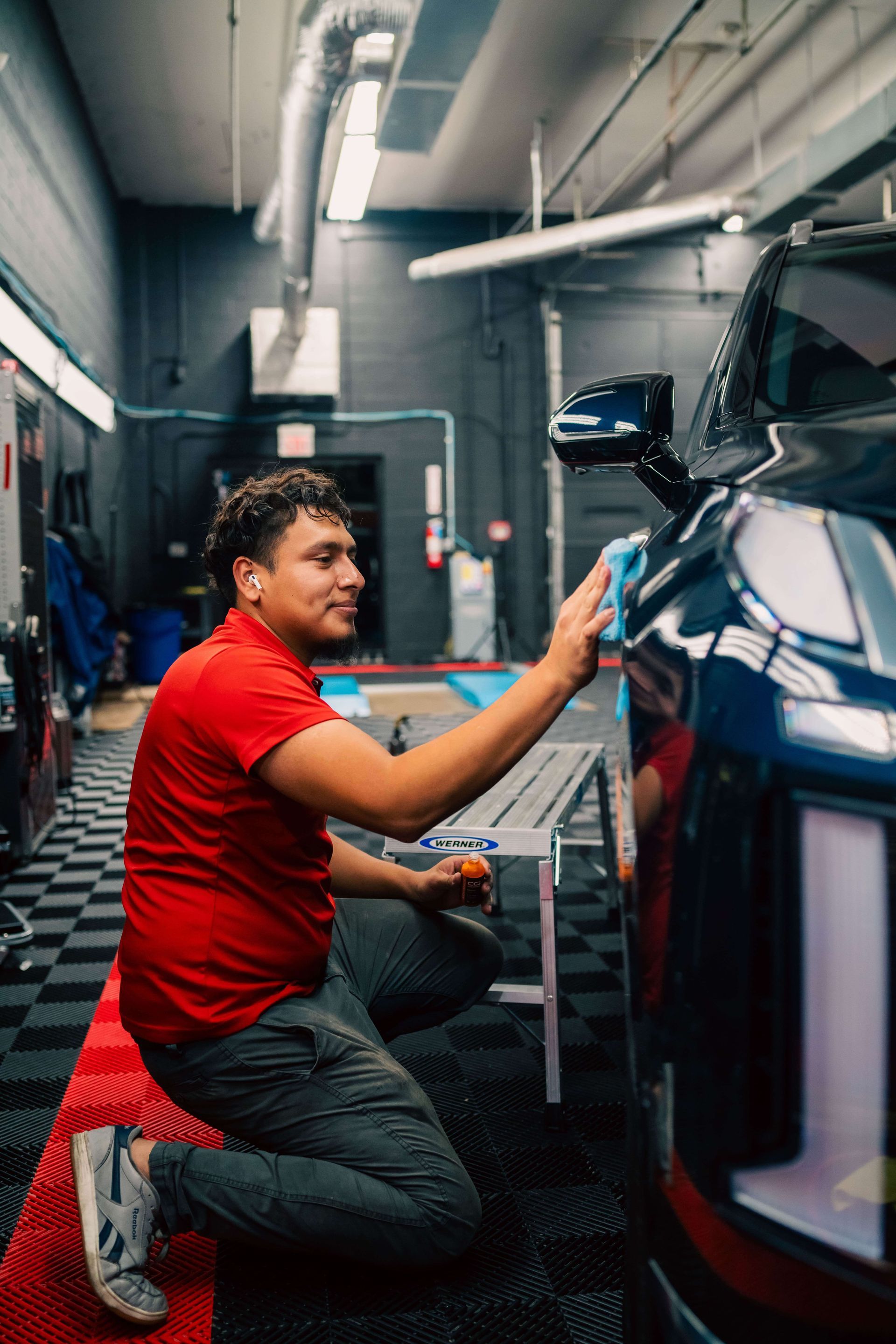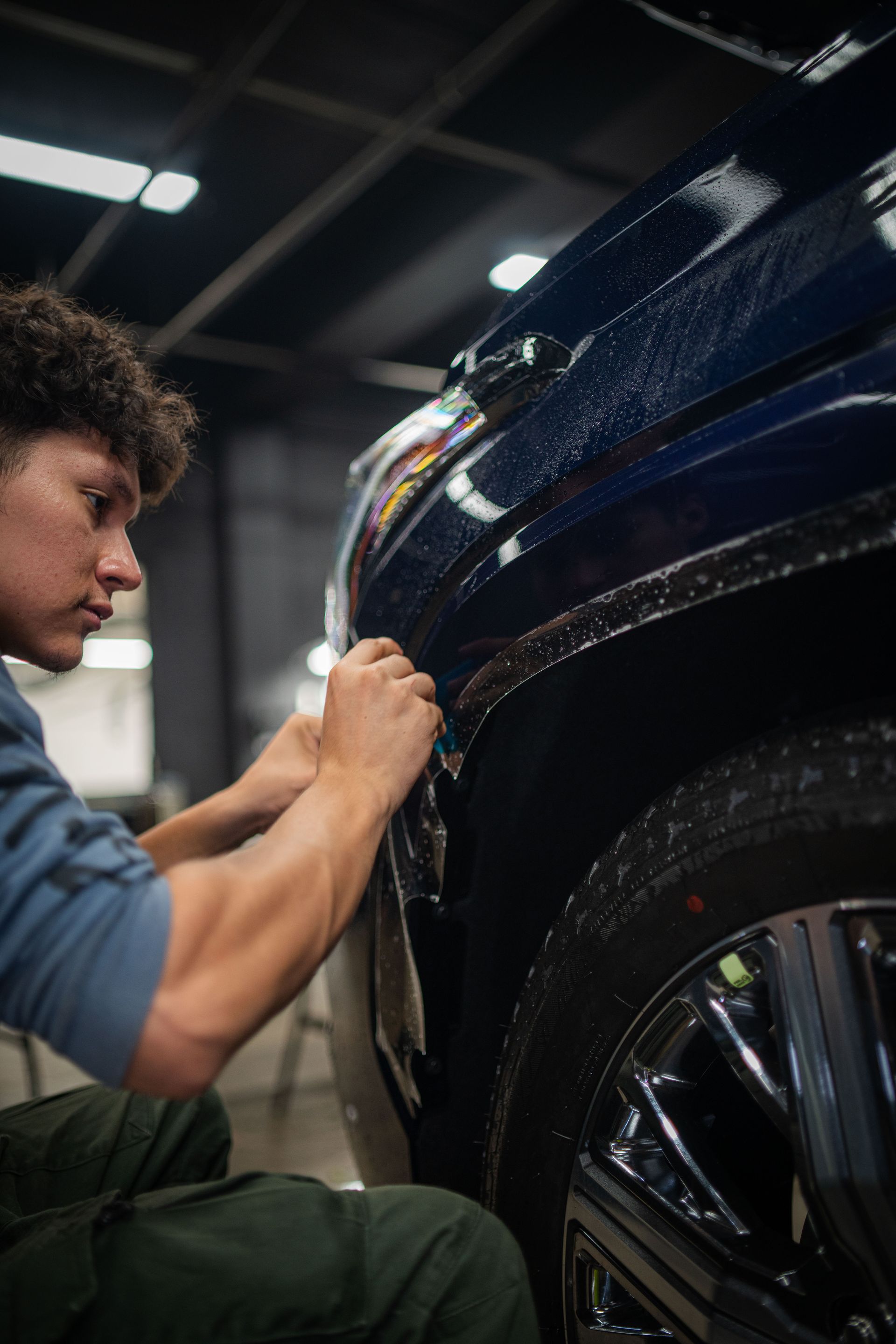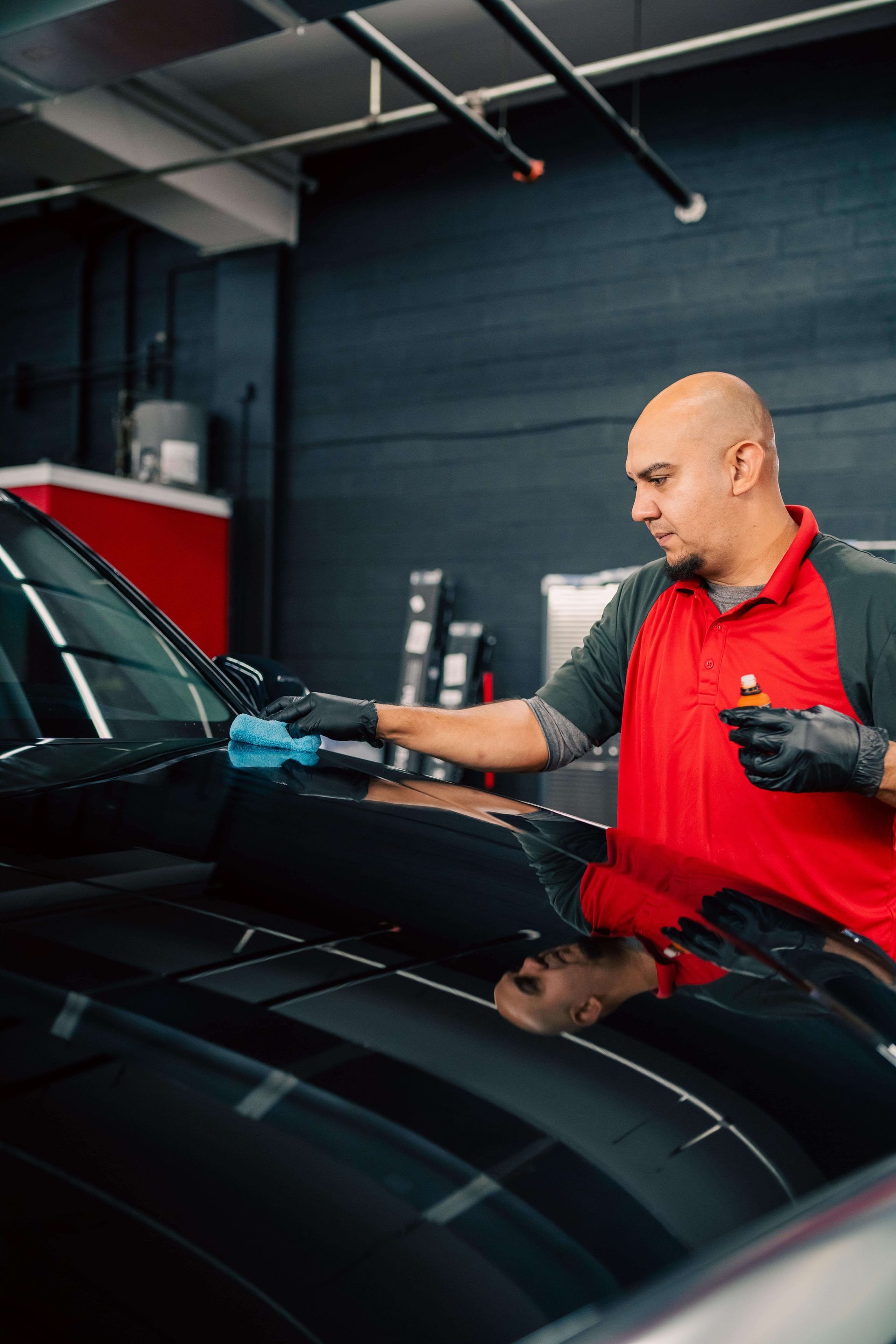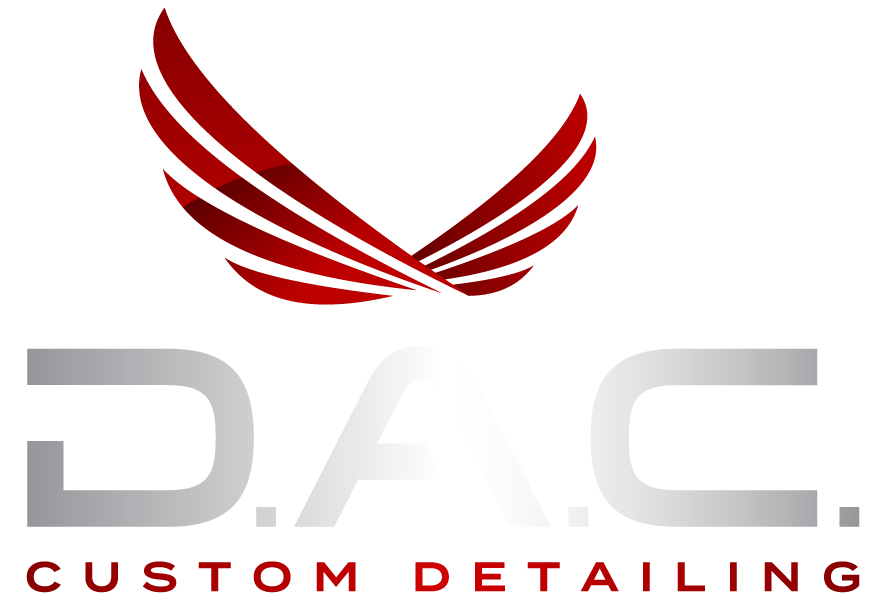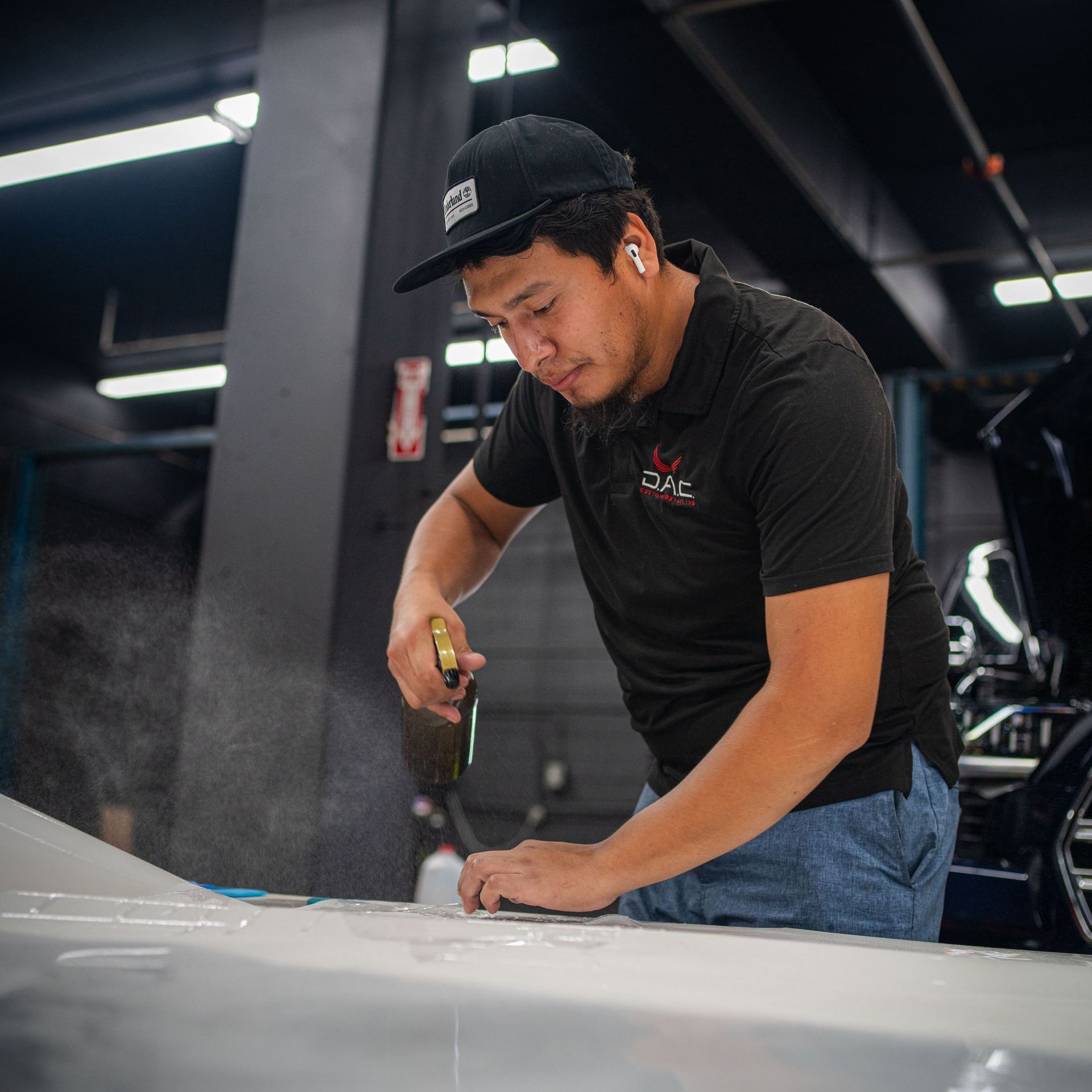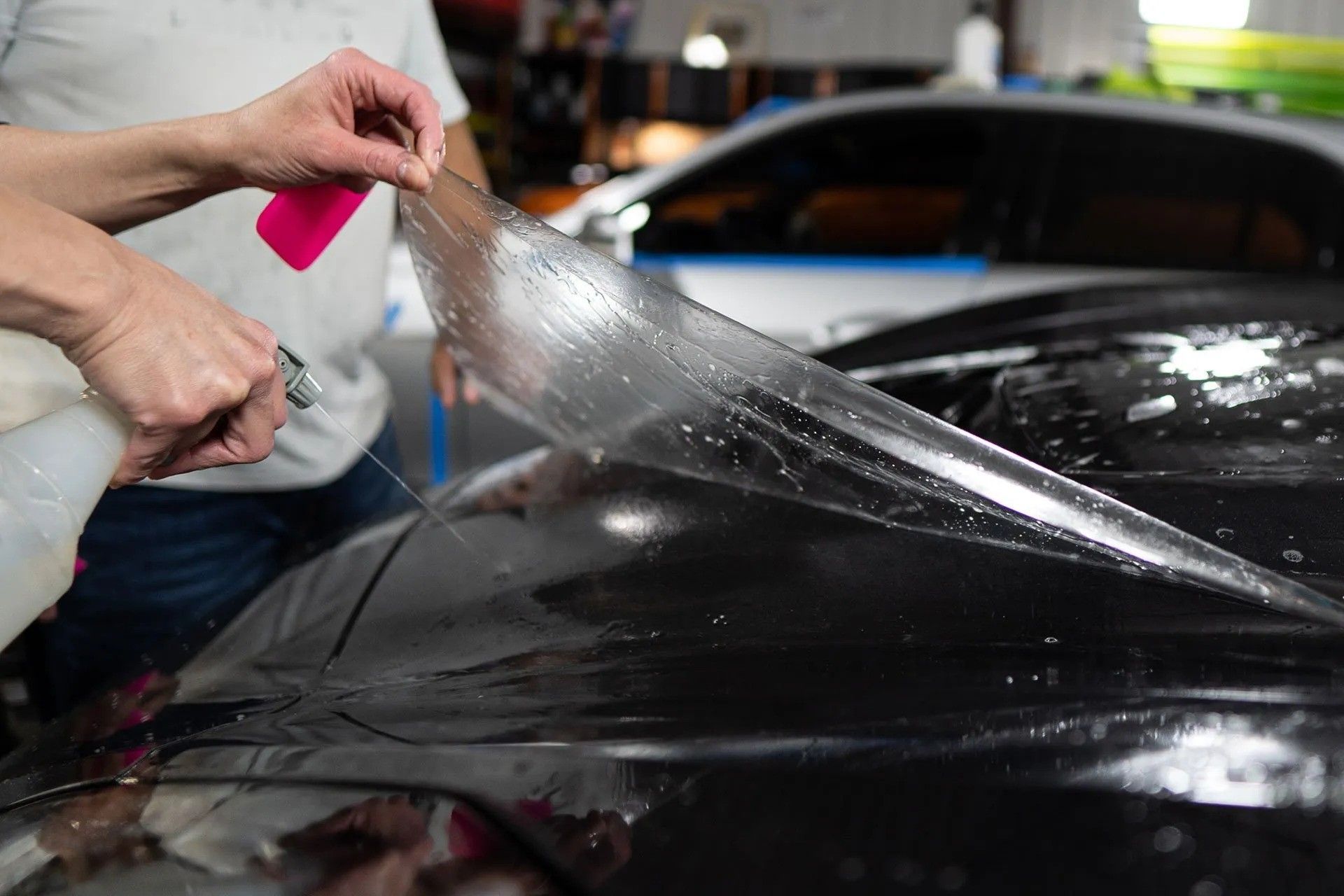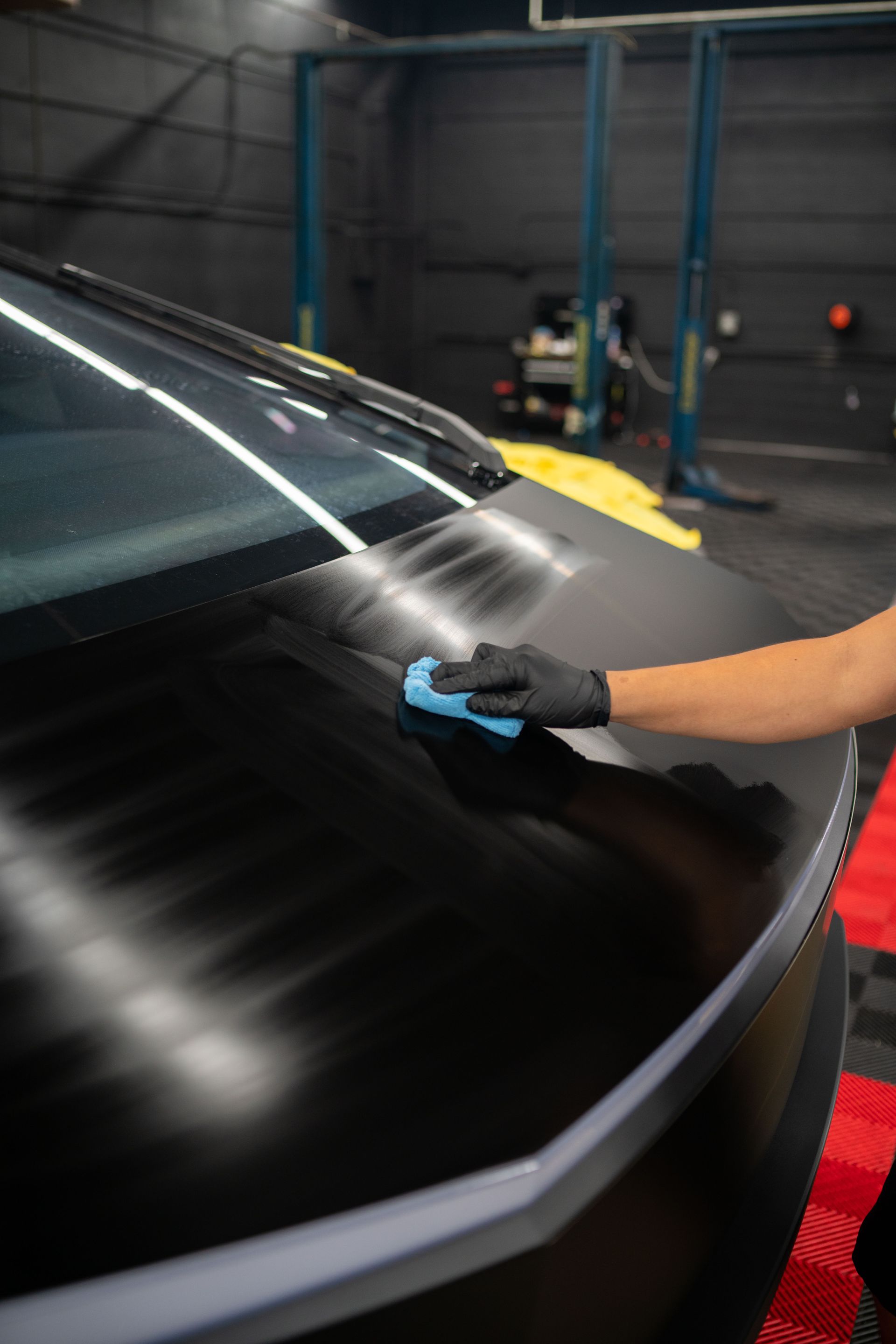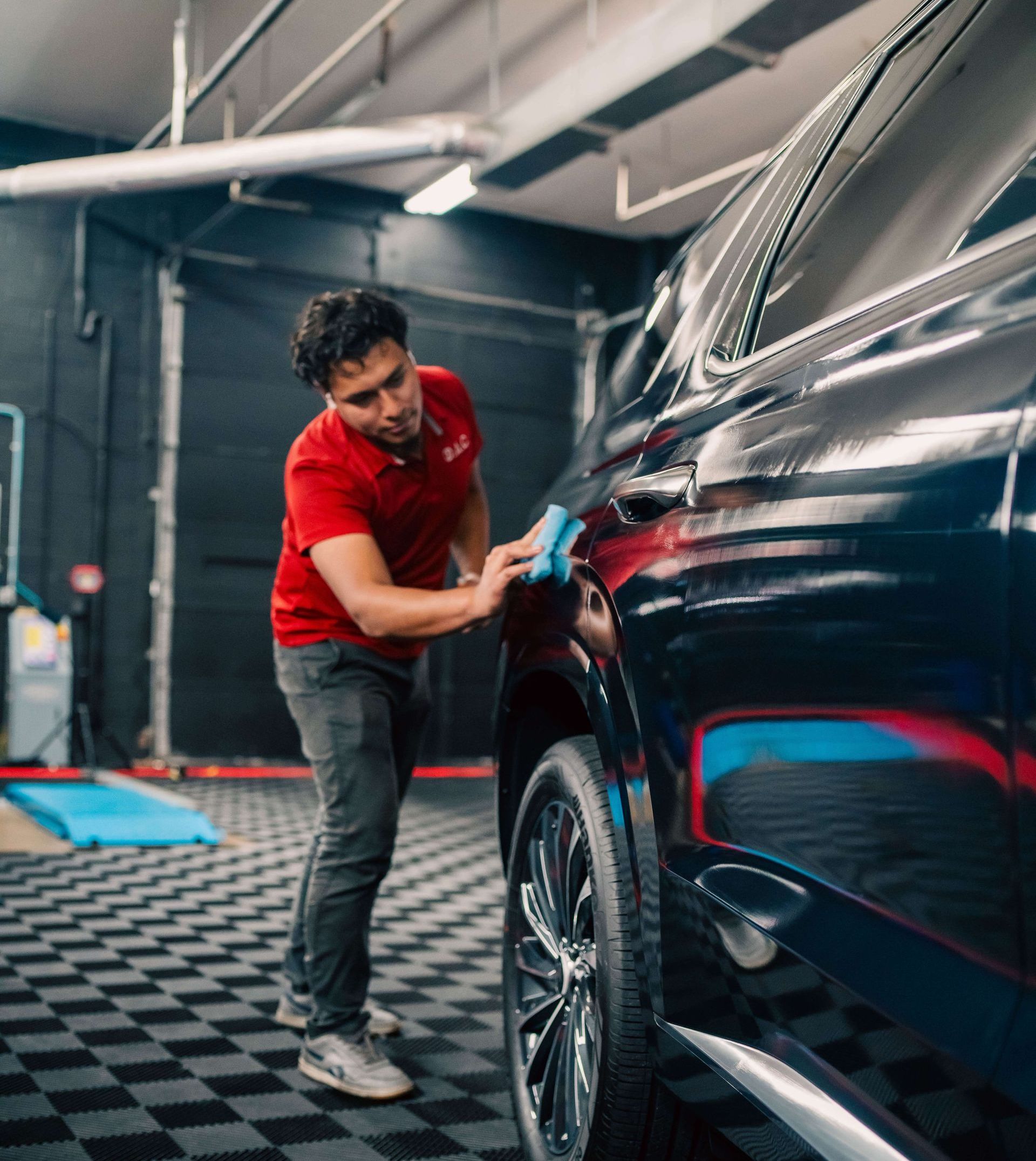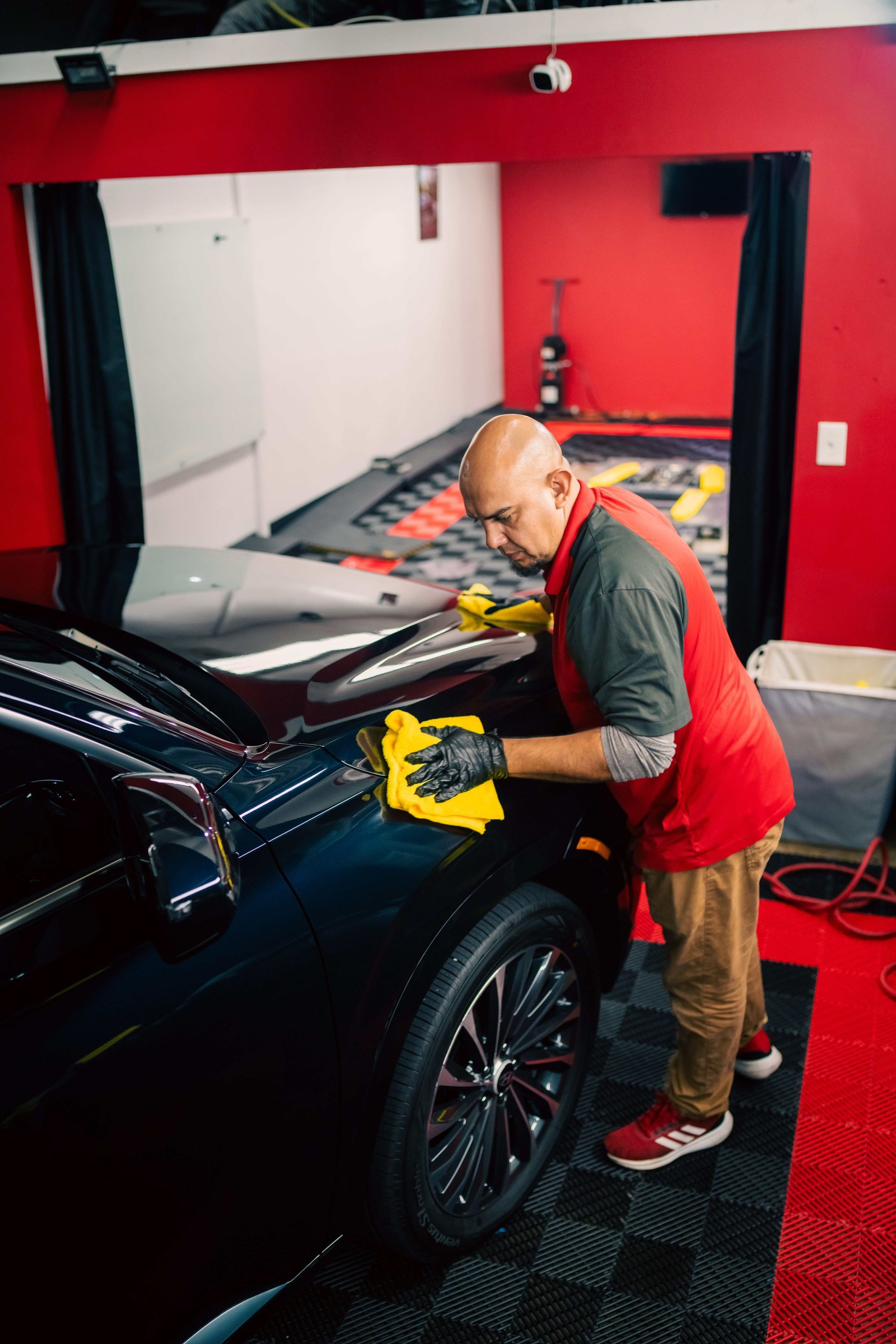REVIVE, PROTECT, MAINTAIN
When it comes to keeping your car looking new, paint protection film (PPF) is becoming a go-to choice for many car owners. Have you ever admired a sleek vehicle and wondered how its paint looked so flawless? Chances are it’s because of a quality paint protection film. Not only does PPF shield against scratches, chips, and sun damage, but it also keeps your car's appearance sharp and vibrant. Choosing the right film can feel overwhelming given the variety of options available. That’s why understanding what to look for is important to ensure you make the best decision for your vehicle’s needs while preserving its beauty and value. Let’s dive in and explore how to choose the perfect PPF!
When choosing the best paint protection film for your car, consider factors such as the film's thickness, clarity, self-healing properties, and durability. Additionally, evaluate customer reviews of various brands like XPEL or Suntek and ensure you select an experienced installer to guarantee optimal application and performance.
Evaluating Paint Protection Film Options
When it comes to selecting the right PPF for your car, understanding the types available is essential. You might find yourself drawn to a standard clear film, which is the most common and widely trusted option. It offers excellent protection without altering the appearance of your vehicle. On the other hand, if you’re looking to make a statement, matte films can provide a unique aesthetic while preserving the integrity of the paint below. There are also color-tinted films that not only protect but can also add a custom look, providing both functionality and flair.
Performance Ratings
As you navigate through these options, performance ratings become crucial in your decision-making process. Look closely at metrics such as durability, thickness, and self-healing capabilities—these indicators can greatly influence how well the film performs over time. For instance, films with a higher mil thickness usually provide better resilience against everyday elements like rock chips and scratches.
With an understanding of the various types of PPF and their performance ratings under your belt, you're now primed to investigate key characteristics that will enhance your vehicle's defense against wear and tear.
Key Features to Look For
One of the most critical features to consider when evaluating PPF is UV resistance. This serves a dual purpose: it protects the film itself from yellowing over time and safeguards the underlying paint from fading due to prolonged sun exposure. Imagine putting in all that effort to keep your car looking pristine, only to watch the color fade away under glaring sunlight. Leading brands offer PPF with exceptional UV protection properties, making them a reliable choice for maintaining your car’s aesthetic appeal. Investments in quality protection translate into long-term benefits.
- Self-Healing Properties: Another game-changing feature worth exploring is self-healing technology. This innovative aspect allows minor scratches on the film to magically disappear when exposed to heat, whether from the sun's rays or a heat gun.
- Hydrophobic Coating: When considering ease of maintenance, especially in everyday usage, opt for films that come with a hydrophobic coating. This ensures that water beads up and rolls off the surface, preventing dirt and grime from sticking. Reputable brands have developed PPFs with built-in hydrophobic properties, making your vehicle much easier to clean and maintain its flawless shine. Imagine washing your car and watching water glide off effortlessly—it's a satisfying sight!
With these vital features considered, you can begin to evaluate how different options will serve you best on both performance and upkeep as we shift our focus toward notable market contenders.
Installation: DIY vs. Professional
DIY installation can be appealing because it’s generally more budget-friendly. However, this path requires meticulous attention to detail to avoid mistakes like bubbles, misalignment, or even damage to your vehicle's paint. Many people find themselves intimidated by the prospect of applying PPF, yet those with steady hands and a bit of patience can achieve great results. There are countless online tutorials, videos, and pre-packaged installation kits that guide you through each step. It helps if you have experience in similar tasks, as the skill level required for DIY ranges from moderate to high.
It's important to remember that even minor errors during installation can lead to peeling or a less-than-ideal appearance down the line. For example, improper handling can expose the film’s edges, which could allow dirt and grime build-up underneath the film—a sight no car owner wants to see after hours of careful application. Ensuring that you understand how to properly measure and cut the film is crucial; inaccurate cuts may result in needing additional material, thus incrementally increasing your costs.
Professional Installation
On the other hand, professional installation typically yields a higher-quality finish with fewer risks of error. Skilled installers bring not only experience but also specialized tools that facilitate a proper fit and finish while ensuring the longevity of the protective film. They know how to work with various vehicle shapes and sizes, making adjustments on the fly that DIYers might miss. This attention leads to a seamless look that enhances rather than detracts from your vehicle's aesthetic appeal.
In addition, many reputable professionals will provide warranties for their work—often ranging from 5 to 10 years—which gives you peace of mind knowing that even if something goes wrong, you're covered. This extra layer of assurance can often outweigh the initial savings from opting for a DIY project. Considering both options allows you to assess your confidence in your skills alongside budget considerations. The insights gained here could help you navigate toward essential factors such as protection features and financial commitments.
Warranties and Costs
When it comes to the financial aspect of paint protection film (PPF), there’s a clear spectrum of pricing based on coverage area and vehicle design complexity. A full application, which covers the entirety of the vehicle, typically ranges from $2,000 to $10,000. This wide range arises from factors such as the specific film brand used, installer expertise, and the unique contours of your car. For instance, luxury or high-performance vehicles may require more intricate installation techniques, thus driving up costs.
If you're looking for a more budget-friendly option, consider partial applications. Many car owners find significant value in protecting high-impact areas like the front bumper or hood. These targeted applications can save you money while still providing essential protection against wear from road debris or minor scratches. Depending on your vehicle and requirements, you might pay a fraction of the cost—often around $700 to $1,000 for these smaller sections.
Warranties
Now let’s shift our focus to warranties, which are critical when investing in PPF. Generally, warranty periods can range from 5 to 10 years, depending on your choice of brand and installer. For example, XPEL stands out for offering a robust 10-year warranty that covers issues like yellowing, peeling, and cracking. These warranties serve as peace of mind; if something goes wrong with the material within that timeframe, you'll have support for repairs or replacements.
However, it’s important to read through the fine print of warranty documentation carefully; it often includes stipulations about proper maintenance practices and conditions under which the warranty would be voided. Some warranties may only cover defects under normal use—this means that if your car’s subjected to extreme conditions or improper care, you could find yourself without protection.
With costs and warranties considered, it's crucial to evaluate further aspects that can influence your decision regarding PPF for your vehicle. Understanding these details ensures you make an informed investment in your car's exterior protection.
Additional Considerations
One crucial aspect of selecting paint protection film (PPF) involves understanding its environmental impact. As the world increasingly moves toward sustainability, it becomes essential to consider products that minimize harm to the environment. Some PPF brands are taking significant steps in this direction by using eco-friendly materials.
In tandem with environmental factors, it's wise to remain aware of any local regulations regarding the application of PPF. This is especially critical if you’re considering tinted options or specific finishes that could be subject to local restrictions. Guidelines can vary significantly from region to region, so it’s worthwhile to research what’s permitted in your area before proceeding with installation. Consulting local automotive experts or looking up municipal codes can save you future headaches and ensure that you stay compliant with the law.
Another element to keep in mind is how PPF could influence your vehicle's resale value. A well-maintained car with visible protective measures often garners more interest from prospective buyers. Installing reputable brands of PPF can serve as a telling sign of diligence in vehicle care. By demonstrating proactive maintenance through the application of PPF, you're likely to attract buyers who appreciate a car that has been extensively protected from scratches and chips over time.
As you digest all these considerations, remember that they work together to strengthen your decision-making process. Understanding the environmental implications, adhering to local laws, and recognizing how these efforts fit into the overall value of your vehicle will arm you with comprehensive knowledge when selecting the best paint protection film for your needs.
Ultimately, by carefully weighing these factors, you can make a well-informed choice that ensures both visual appeal and lasting protection for your vehicle.
Top-Tier Ppf for DMV Drivers
Shield your vehicle from road hazards, scratches, and wear with expert paint protection film (PPF) from D.A.C. Custom Detailing! Serving the DMV—District of Columbia, Maryland, and Virginia—we provide top-tier PPF installation to keep your car’s finish looking flawless for years. Our high-quality films offer unmatched defense against chips, stains, and UV damage while maintaining a sleek, glossy appearance. Get the protection your vehicle deserves—contact us today to schedule your PPF installation!
Share with friends
